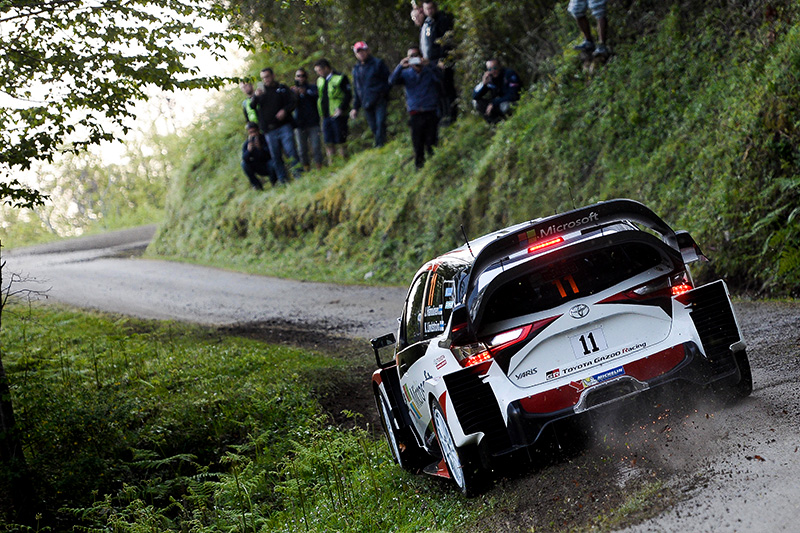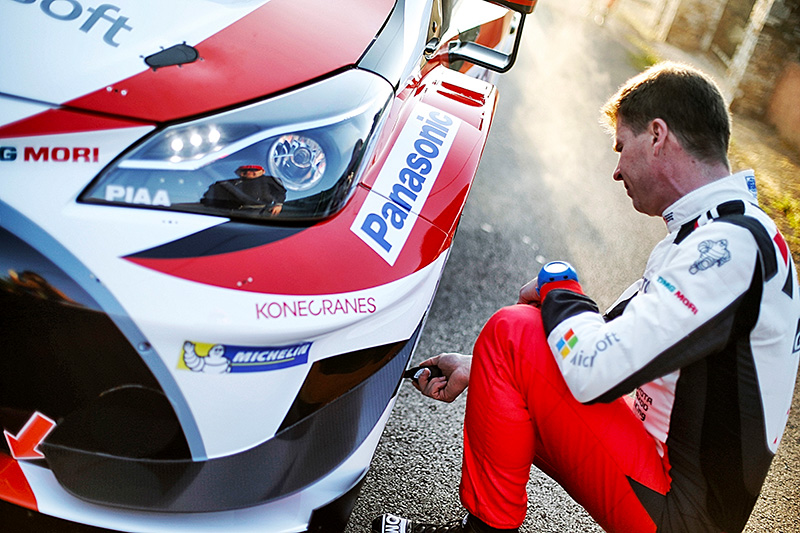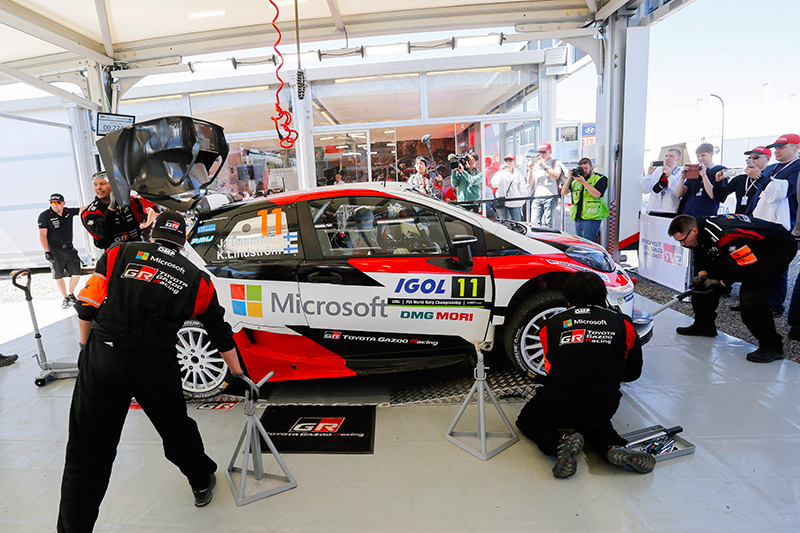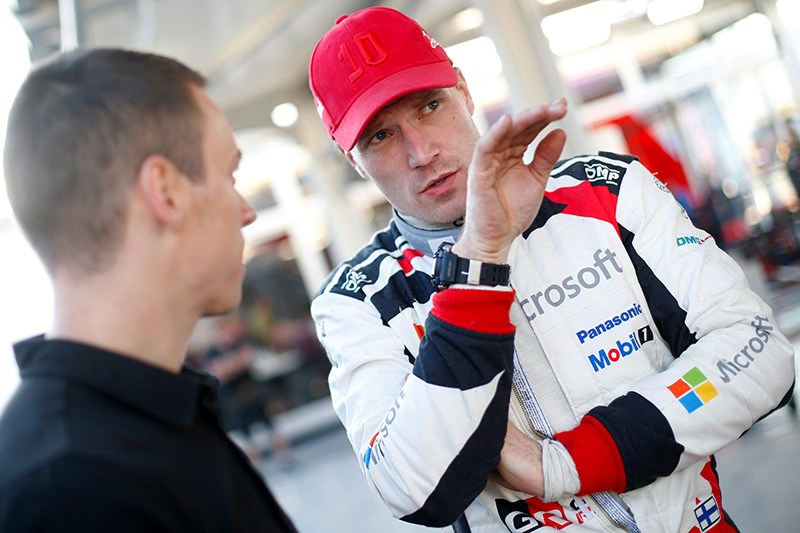Tour De Corse
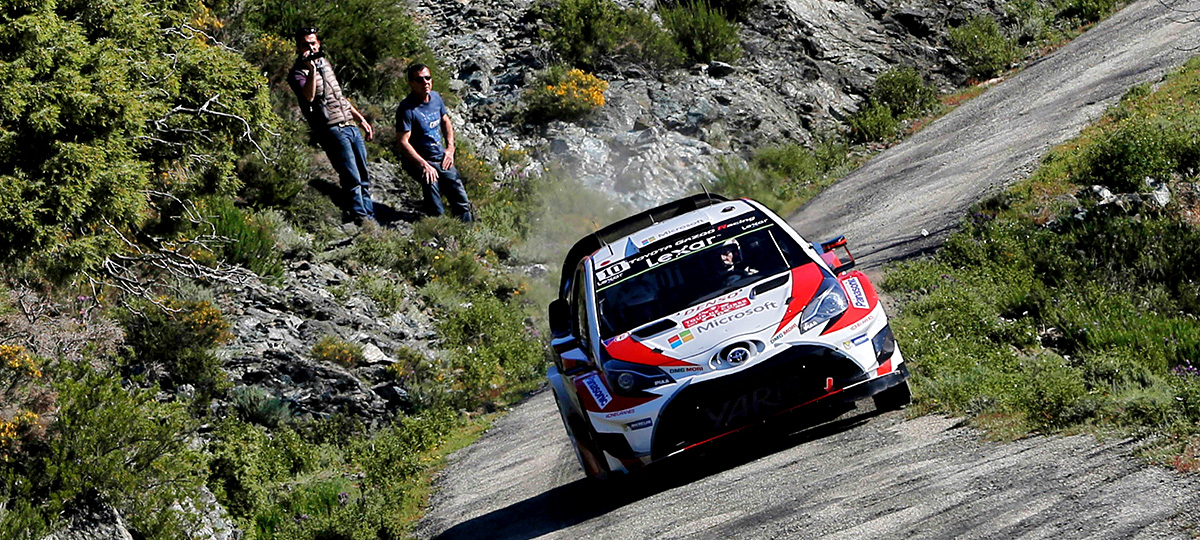
The importance of developing and improving the car from the drivers’ viewpoint—learning on Corsica’s challenging tarmac roads
Tour de Corse-Rallye de France is a traditional rally that has been included in the WRC series since its first year in 1973. It is one of the leading tarmac rallies on the WRC calendar and is almost certainly the most famous tarmac rally in the world. The rally is held on Corsica, a Mediterranean island dominated by steep mountains at the center. Twisty, winding roads reach out to every corner of the island like veins. Once a year, during Tour de Corse, these roads, which usually support the daily lives of the island’s inhabitants, morph into a “special stage” where drivers compete against the clock.
Corsica’s wild tarmac roads—a stark contrast to the usual circuits—significantly increase the difficulty of the rally
Tour de Corse is the first full-tarmac rally of the WRC season. Although the entire course is paved, the Corsica roads are a far cry from the smooth surfaces found on expressways or national highways. The type and condition of the tarmac is extremely inconsistent, and even surfaces which appear identical can provide vastly different levels of tire grip. Some of the roads have deteriorated with time, with extremely rough surfaces that are riddled with large holes. On others, the surface is covered by debris from crumbling roads, as well as dirt and sand from the unpaved road shoulders, or they are so dirty that it is difficult to call them “paved.” On top of this, the roads which snake this way and that across the island are hardly level—there are gaps in the road everywhere, which thrust the vehicles upwards when driving normally. The paved roads of Corsica are distinctive for their untamed nature and differ massively from standard circuits. This significantly increases the difficulty of the rally.
Tour de Corse was TOYOTA GAZOO Racing WRT’s first full-tarmac rally. Although most of the season’s opening rally, the Rallye Monte–Carlo, was on tarmac, this would be the team’s first rally where all the SS were on tarmac. For this reason, the team conducted painstaking tests on the Yaris WRC in tarmac specifications on the Corsican roads before the rally took place. The team managed to identify setups which satisfied the drivers, and proceeded to the rally with confidence. However, Jari-Matti Latvala, who was a winner here in 2015, wasn’t completely happy with his car’s handling. He endured a difficult start in the opening SS, recording times that were between fifth and seventh fastest. In SS1, Juho Hänninen misjudged the grip levels at a transition between roads, took too much speed into the corner and crashed. The first day of competition ended with disappointing results.
The team realizes that testing and the rally itself require different car setups
For some reason, setups that felt good during the tests didn’t result in strong performances during the rally. The tests were short, so the road conditions were easy to understand, but the team realized that they would sometimes need different setups for the rally itself. Although fundamental changes are difficult to implement at the rally location, it is usually possible to tweak something. Team Principal Tommi Mäkinen considered solutions with his mechanics and drivers, and decided to implement fairly major changes to the setup on Hänninen’s car, which was being repaired after retiring to return to the rally. It was possible that the changes would backfire, but this season is meant to be a year for learning as much as possible. In fact, it is against the team’s way of thinking to be afraid to try new things. The team entrusted their hopes to Hänninen and his car, and sent the drivers and vehicles out to day two of the rally.
Drastic setup changes enable Latvala to successfully demonstrate the true speed of the Yaris WRC
Although the first SS of the second day was more twisty and more difficult than the previous day’s, Hänninen managed to set the second fastest time. He then set the third fastest time on the following SS. The team’s changes were performing as hoped. During the daytime service, when teams are given 30 minutes to work on their cars, the team chose to implement the same setup changes on Latvala’s car as well. This was a tough task in such a short service time, but TOYOTA GAZOO Racing WRT’s mechanics rapidly and accurately completed the setup changes and had the Yaris WRC ready to go well within the time allowed.
Though Latvala wasn’t fully satisfied with his car’s handling during the morning, he was able to draw the true speed from the Yaris WRC following the setup changes. Latvala recorded the second and third fastest times on Day Two’s two afternoon SS, and finished the day in fourth position overall. Latvala returned to the service park with a satisfied smile: “In the two stages this afternoon, I really enjoyed driving it: I was able to push and it was a big pleasure. I want to say thank you to the team for their superb judgment and perfect work.” Mäkinen, who was waiting for Latvala, praised the drivers, co-drivers, engineers and mechanics for carrying out their tasks with such skill: “We are challengers. We must not forget this desire to embark on new challenges. Today was a day which proved this.”
Completely attuned to the Yaris WRC, Latvala completes the power stage fastest of all, and secures bonus points in the process
On the final day of the rally, Latvala was for some reason unable to raise his pace during the first and longer of the day’s two stages, and dropped to fifth in the overall standings. Hänninen, meanwhile, drove off course with just five kilometers to go and was forced to retire. At the end of the stage, the team once again realized the depth and difficulty of Tour de Corse. However, Latvala went all out in attacking the final short stage, and extracted the maximum performance possible from the present Yaris WRC. Completely attuned, both car and crew set a startling pace. The roadside spectators were overwhelmed by Latvala’s ability to push to the absolute limits. On this power stage, where drivers can claim bonus points that are hugely important for the world championship, Latvala recorded his first stage win of the rally. Latvala commented after the stage: “I knew that if I wanted to have fourth place, I needed to have a perfect run.” For a driver to push a car to its limits, he has to have absolute faith in it. Latvala’s outstanding run was the culmination of the knowledge and dedication of the team’s engineers, who prepared the Yaris WRC for a full-on attack in a limited timeframe.
Any unease felt by the drivers during their interactions with the road is instantly resolved by the mechanics and engineers, and the cars are returned to the rally
Team Chairman Akio Toyoda, who was roadside and competed together with the team for the first time this season, reaffirmed that Team Principal Tommi Mäkinen’s team-building and car-making was headed in the right direction: “One of the things that struck me most was the midday service on Saturday, when our mechanics made a number of important changes and completed the work just within the time limit, following the feedback from the drivers in the morning. Thank you to Tommi for assembling such a dedicated and professional team. The result was an improved car, and that perfectly reflects our philosophy of making ever-better cars.”
TOYOTA GAZOO Racing WRT was just seconds shy of a podium finish at Tour de Corse, its first ever full-tarmac rally. In addition, while the team had managed to get both cars across the finish line for the first three rallies of the season, it was unfortunately unable to extend this record in France. However, the team’s experience of the wild conditions on the tarmac roads of Tour de Corse enabled it to secure something more than just a strong result: the team was able to absorb a lot of information and improve its fundamental strengths. The next tarmac rally will be round ten, Rallye Deutschland, which will take place in August. Although Rallye Deutschland poses an altogether different set of problems to Tour de Corse, the team has set its sights on using the experience it has gained in Corsica to demonstrate an even more powerful performance on Germany’s roads.
RESULT
| Pos | Driver | Co-Driver | Vehicle | Time |
|---|---|---|---|---|
| 1 | Thierry Neuville | Nicolas Gilsoul | Hyundai i20 Coupe WRC | 3h22m53.4s |
| 2 | Sebastien Ogier | Julien Ingrassia | Ford Fiesta WRC | +54.7s |
| 3 | Dani Sordo | Marc Marti | Hyundai i20 Coupe WRC | +56.0s |
| 4 | Jari-Matti Latvala | Miikka Anttila | Toyota Yaris WRC | +1m09.6s |
| 5 | Craig Breen | Scott Martin | Citroen C3 WRC | +1m09.7s |
| 6 | Hayden Paddon | John Kennard | Hyundai i20 Coupe WRC | +2m16.3s |
| 7 | Andreas Mikkelsen | Anders Jaeger | Skoda Fabia R5 | +8m10.7s |
| 8 | Teemu Suninen | Mikko Markkula | Ford Fiesta R5 | +9m17.0s |
| 9 | Stephane Sarrazin | Jacques-Julien Renucci | Skoda Fabia R5 | +9m23.6s |
| 10 | Yohan Rossel | Benoit Fulcrand | Citroen DS3 R5 | +12m57.1s |
| Retired | Juho Hänninen | Kaj Lindström | Toyota Yaris WRC | SS9, off road |

